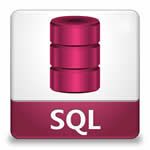
SQL courses
- MySQL for Administration
Sorry, we currently do not have any public courses scheduled for the SQL level 1 course. Please contact us to see if we can put one on the schedule for you
Sorry, we currently do not have any public courses scheduled for the SQL level 1 course. Please contact us to see if we can put one on the schedule for you
MySQL for Administration
Course Description
In today’s business environment we have large amounts of data and information that has to be organized and managed. MySQL is the most popular open source database, offering the power of a fully relation database in a package that’s easy to set up and administer making it an a popular tool for organizations that need to manage large data.
This course will focus on how to install MySQL, manage users and privileges, how to backup and restore MySQL databases, configure and maintain a MySQL server.
Target Audience
This course is primarily for people who do not know much about deploying and using an actual database-management system, or about developing applications that use a database.
Prerequisites
MySQL for Administration
Module 1: Introduction
Module 2: Installing MySQL
Module 3: Using the MySQL Monitor
Module 4: Modeling and Designing Databases
Module 5: Basic SQL
Module 6 : Working with Database Structures
Module 7: Advanced Querying
Module 8: Doing More with MySQL
Module 9: Managing Users with Privileges
Module 10: Backups and Recovery
Module 11: Using an Options File
Module 12: Configuring and Tuning the Server
Our goal is to make sure your training meets your objectives, not ours. Therefore, all of our outlines are used as guidelines for particular courses. This outline does not guarantee that all the topics listed will be covered in the time allowed. The amount of material covered is based on the skill level of the student audience. We may change or alter course topics to best suit the classroom situation.
Sorry, we currently do not have any public courses scheduled for the SQL level 2 course. Please contact us to see if we can put one on the schedule for you
Sorry, we currently do not have any public courses scheduled for the SQL level 2 course. Please contact us to see if we can put one on the schedule for you
Sorry, we currently do not have any public courses scheduled for the SQL level 2 course. Please contact us to see if we can put one on the schedule for you
Sorry, we currently do not have any public courses scheduled for the SQL level 3 course. Please contact us to see if we can put one on the schedule for you


